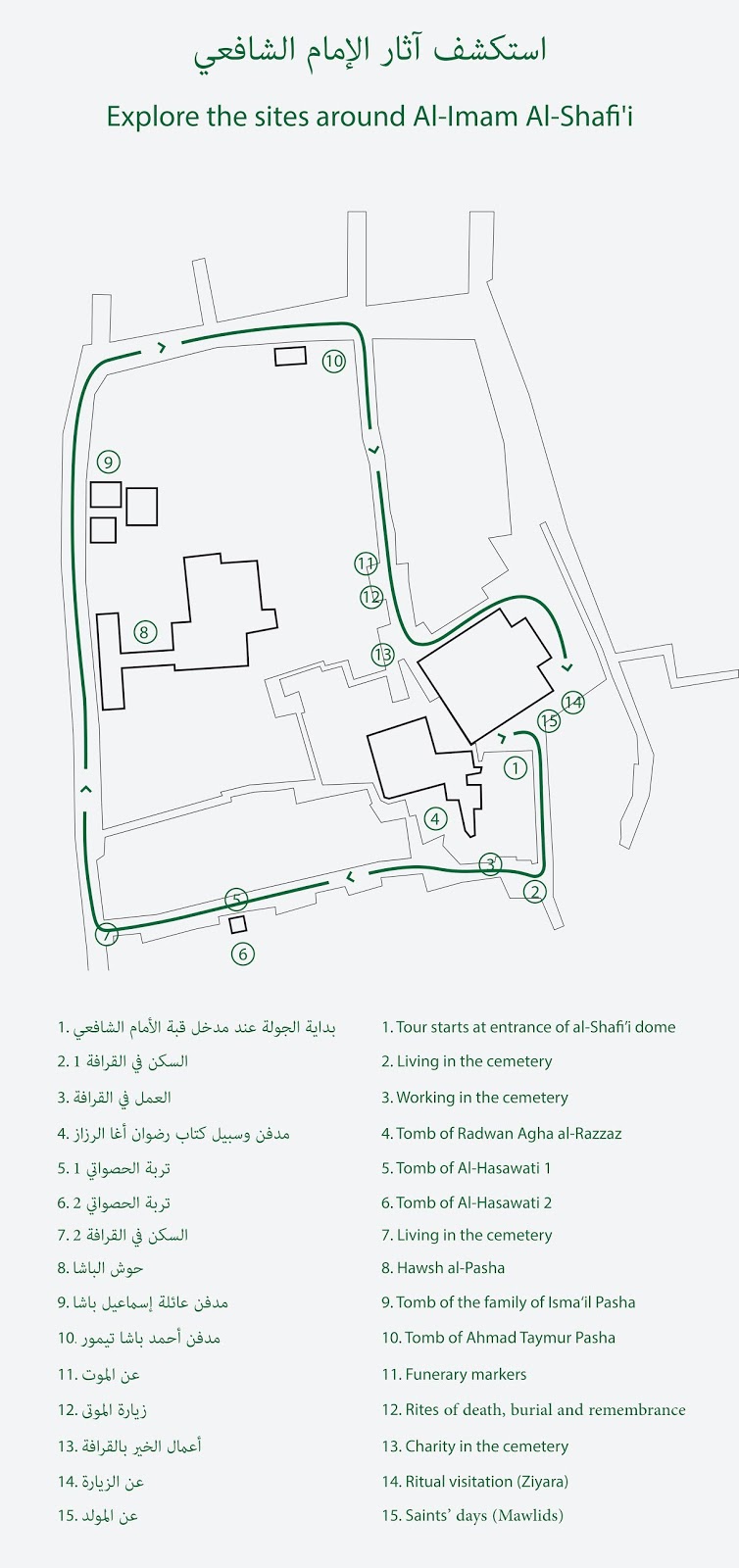حوش الباشا / Hawsh al-Pasha
حوش الباشا (مدفن الفامليا)
التاريخ: عصر محمد علي - 1223هـ | 1808م - منتصف القرن العشرين الميلادي
المؤسس: محمد علي باشاالوظيفة: مدفن عائلة محمد علي باشا حاكم مصر ومؤسس الاسرة العلوية
في عام 1808 – ثلاثة أعوام بعد تقلده الحكم كوالي لمصر شبه مستقل عن الباب العالي – أسس محمد علي باشا مدفنًا عظيمًا شرقي قبة الإمام الشافعي
وكان هذا الموقع موضع دفن العديد من الولاة العثمانيين وعائلاتهم وموظفيهم، ويمكننا اعتبار اختيار محمد علي باشا لهذا الموضع إعلانًا عن إحكامه زمام الأمور بمصر، المدفن الأصلي كان يتكون من أربعة قباب أضيف إليهم قبتان عام 1831
محمد علي باشا نفسه مدفون في مسجده بالقلعة إلا أن هذا المدفن الذي سمي مدفن بمدفن الفاميليا– ظلّ المدفن الرسمي لعائلة محمد علي وموظفي البلاط والخدم
محمد علي باشا نفسه مدفون في مسجده بالقلعة إلا أن هذا المدفن الذي سمي مدفن بمدفن الفاميليا– ظلّ المدفن الرسمي لعائلة محمد علي وموظفي البلاط والخدم
من ضمن المدفونين هنا زوجته أمينة هانم (و. 1825) وأبناؤه طوسوم باشا (و. 1816 – مدفون وراء الساتر المعدني) وأسماعيل باشا (و. 1825) وأبراهيم باشا (حكم مصر من يوليو إلى نوفمبر 1848) وعباس حلمي (حكم مصر بين 1848 و1863) ومحمد سعيد باشا (حكم مصر بين 1854 و1863) وعائلاتهم
ويزين التراكيب شواهد علي شكل أغطية رأس تختلف حسب المنصب وانوع فنجد أن شواهد السيدات تزينها تاج وضفيرة وشواهد الرجال عليها عمامة أو طربوش.
في عام 1883- أضاف الخديوي توفيق قبة سابعة لوالدته شفق نور وكذلك ممر واصل بين القبة والمدفن القائم. وفي النصف الثاني من القرن العشرين حاول الملك فاروق توحيد شكل المدفن فأعاد بناء الواجهة والمدخل على نمط موحد
في عام 1883- أضاف الخديوي توفيق قبة سابعة لوالدته شفق نور وكذلك ممر واصل بين القبة والمدفن القائم. وفي النصف الثاني من القرن العشرين حاول الملك فاروق توحيد شكل المدفن فأعاد بناء الواجهة والمدخل على نمط موحد
 |
للدخول الي اللعبة أضغط هنا |
Hawsh al-Pasha (Madfan al-Familia)
Date: Muhammad Ali Era- 1223/1808 – mid 20th century
Founder: Muhammad Ali Pasha
Function: Tomb for Muhammad Ali Pasha’s family.
monumental mausoleum complex just to the east of the Dome of al-Imam al-Shafi‘i. Already a popular burial place for Ottoman viceroys and officials, this was an important step towards the consolidation of his reign. Initially, the mausoleum included four domed structures before it was enlarged to six in 1831-32.
While Muhammad ‘Ali himself was laid to rest at his mosque in the Citadel, Hawsh al-Pasha, also known as madafin al-familia (Tombs of the Family), remained the official burial ground for his successors, members of his family, court officials and servants, until the early 20th century. Among those buried there are his wife, Amina Hanem (d. 1823), and his sons Tusun Pasha (d.1816), whose tomb is placed within a metal screen, Isma‘il Pasha (d.1825), Ibrahim Pasha (r. July – November 1848), ‘Abbas Hilmi I (r. 1848-1863), Muhammad Sa‘id Paha (r. 1854 – 1863) and their families. Each tomb is marked by a funerary column with the distinctive headdress of the deceased according to their status and gender; a braid or crown for women, turbans or fezzes for men.
In 1883-84, the Khedive Tewfiq (Muhammad ‘Ali’s great grandson) added a seventh dome for his mother al-Sayyida Shafaq Nur, connected to the rest of the mausoleum by an arcaded corridor. During the second quarter of the 20th century, King Farouk attempted to unify the mausoleum’s appearance, rebuilding the façade and entrance.


